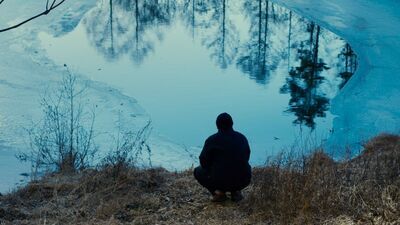“Evil Does Not Exist” had its world premiere at last year’s Venice Film Festival, where it competed for the Golden Lion and won the Grand Jury Prize; during its tour of the international festival circuit, the film also traveled to Toronto, London, and New York, where Hamaguchi visited the Criterion offices and sat with his translator, Monika Uchiyama, for an interview with RogerEbert.com.
Below, our wide-ranging discussion about the destruction of ambiguity in modern cinema, the influence of legendary Japanese filmmaker Kiyoshi Kurosawa, the ideological instability present in discussions of environmental collapse, images of death or absence, and the moral imperative to reveal truth.
This interview, facilitated by translator Monika Uchiyama, has been edited and condensed.
“Drive My Car” received universal critical acclaim, winning three prizes at Cannes and a best-picture nomination at the Academy Awards, the first ever for a Japanese film. I’ve read that “Evil Does Not Exist” started as a collaboration with Eiko Ishibashi, who scored “Drive My Car,” but how did you find your way to this film and decide to make it next?
Initially, the project was because of an invitation from Ishibashi, to make images to accompany her live performances. I probably received this offer around the end of the year, in 2021. And the timing of that was prior to the Academy Awards for “Drive My Car,” but it was certainly after I had finished work on the film and the film had already had a theatrical release. And so, when I received the offer, I genuinely thought, “This sounds really fun.” The process of making “Drive My Car” was just very satisfying, and I felt a kind of closure with that project. To take on an offer that was very different, especially one that would distance me from dialogue-heavy narrative, just sounded like it would lead me to a different place, and I was very excited about that. Also, promoting the film and experiencing the Oscars, all of that was very tiring. So, this was a fresh direction that I was able to pursue after a period of relaxation.
Ishibashi’s music for “Drive My Car” has such emotional depth, longing, and mystery, and her score for “Evil Does Not Exist” even more directly leads us through the film in many ways. I found its mood haunting and ambiguous. What was your perception of her work initially? What elements did you find yourself responding to in creating these images of nature, society, and hidden menace?
I would say the relationship between the music and the image was built off a back-and-forth relationship between myself and Ishibashi. The project was developed over a very long period. Sometimes, I would send images or settings that I felt matched her music, then she would send me demos, and then I would respond to those with images that felt like they matched. One thing we landed on was thinking about nature and the small movements of nature. We had a feeling that idea really lined up with the quality of her music.

